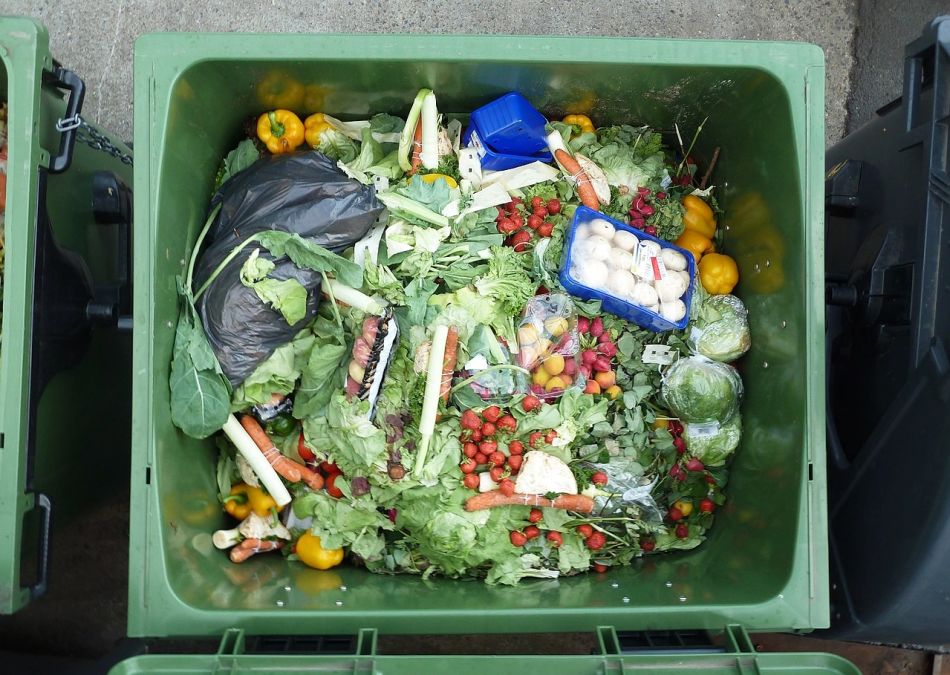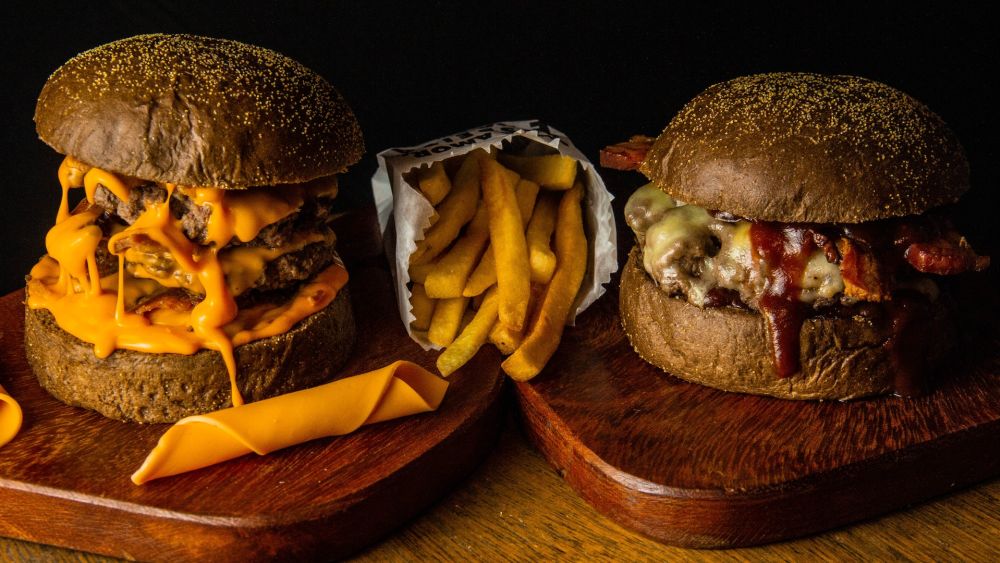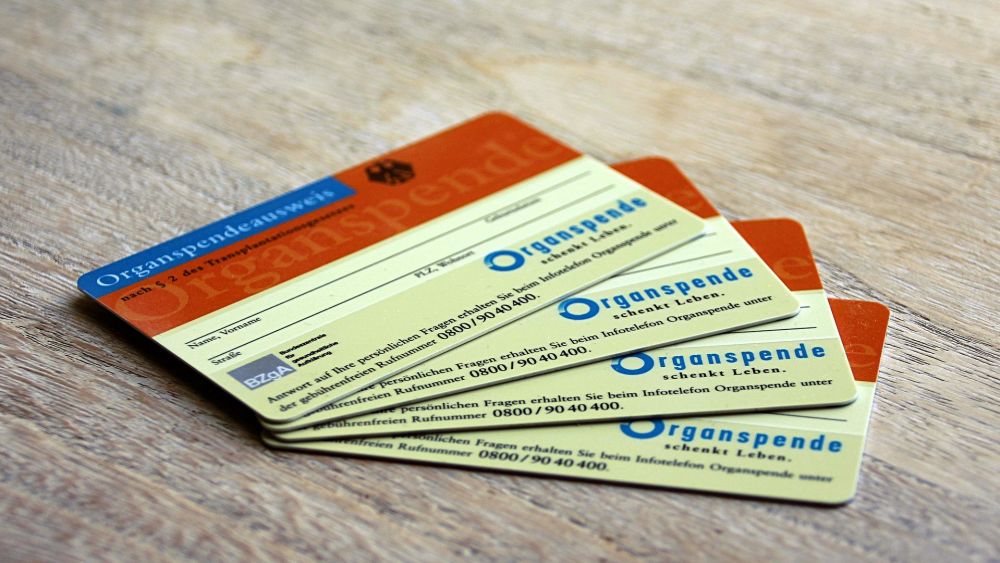Food Waste, Food Insecurity, and the Right to Food
Greggory Moore | Moore Lowdown

image by: Foerster
Nearly one-third of America’s food supply goes to waste. Although the government has recently instituted a number of measures to improve that state of affairs, it may take deeper changes to eliminate food insecurity.
I don't eat red meat, and most shelled nuts make my mouth and throat itch, but when the United States Department of Agriculture (USDA) talks about edible food, it means anything fit for human consumption. In 2014 that government gatekeeper of food in these United States found that in 2010 a full 31% of our food supply went uneaten.
Think about it. We're talking about nearly one-third of (to quote from the report summary) "the [total] amount of edible food, postharvest, that is available for human consumption but is not consumed for any reason[,] includ[ing] cooking loss and natural shrinkage (e.g., moisture loss); loss from mold, pests, or inadequate climate control; and plate waste." That's 133 billion pounds of food. So much food, the USDA tells us, that it’s the single largest component going into municipal landfills. So much food that as it rots in landfills it becomes the country’s third-largest source of methane, a greenhouse gas that’s contributing to global warming.
Or look at it another way: the USDA estimates that the total amount of food waste comes out 1,249 calories per American. Every day. Even though the average adult can survive very comfortably on 2,000 calories per day, but say for the sake of argument and round numbers that every person, adult and child, needs 3,000 calories per day. If we round the number of Americans down to 300 million and round the number of wasted calories down to 1,000 per day, that means the total amount of wasted food in 2010 could have fed 100 million people per day. Let's cut that number in half, presupposing logistical issues that make it impossible for half of that food not to be wasted. After all that, we're talking about enough food to completely feed 50 million people per year.
According to Feeding America, a hunger-relief charity providing food to 37 million people via a network of 200 food banks supplying 61,000 food pantries, soup kitchens, and shelters, that number almost exactly coincides with the number of Americans experiencing food insecurity, which the USDA defines as lacking "access to enough food for an active, healthy life for all household members." So, clearly, the food is out there.
But Feeding America is fighting a war that is being lost on many battlefronts. As an example, Feeding America cites the situation with the Emergency Food Assistance Program (TEFAP), "a means-tested federal program that provides food commodities at no cost to Americans in need of short-term hunger relief through emergency food providers like food banks, pantries, soup kitchens, and shelters." Feeding American notes that commodity support for TEFAP "declined nearly 30 percent in FY2012, leading to 40 percent decline in TEFAP deliveries for food banks in 2013."
According to the USDA, “Reducing food loss and waste is core to USDA’s mission.” To that end, within the last couple of years the USDA has initiated or expanded several initiatives to redress the problem.
Among them: a section of ChooseMyPlate.gov dedicated to helping consumers reduce their household food waste and thus stretch their food dollar; a FoodKeeper app, which provides users with information on proper food storage; lists of USDA programs and National Institute of Agriculture programs that provide food loss and waste project funding of interest to local communities and other entities an expansion of the Farm Storage Facility Loan Program, which provides low-interest financing so producers can build or upgrade facilities to store commodities and thus reduce post-harvest loss.
Although the solution may not be simple, sometimes the government gets in the way. In 2016 the USDA took a step in that direction by “streamlin[ing] procedures for donating wholesome misbranded meat and poultry products by allowing establishments to donate such product without temporary label approval provided that the bills of lading for the product include certain information for Agency verification activities.” The USDA has also taken similar steps “to help increase donations of wholesome fresh imported produce that is subject to destruction or rejection because it does not meet the same or comparable federal marketing order standards as the domestic product.”
On local fronts, however, organizations like Food Not Bombs, which "recovers and shares free vegan or vegetarian food with the public without restriction in over 1,000 cities around the world," often run into local interference in the form of city ordinances restricting the feeding of the homeless persons or hyper-restrictive health codes.
Those local efforts are important, because over half of food-insecure U.S. households have too much income to qualify for federal assistance, says Feeding America, which means there’s a piece of the problem the federal government has yet to understand.
Or at least address, a failing highlighted by the fact that since 1995, when the USDA began to track food-insecurity rates, those rates have not decreased. Like so many systemic problems in this country, food insecurity impacts only the poor. Could it be that the U.S. government doesn't always fire on all cylinders when it comes to helping the poor, who don't exactly comprise a powerhouse voting or lobbying bloc?
One possible meta-strategy to reducing the rate of food insecurity is to make food a legal right. That’s the move advocated by Mariana Clinton and Donald Rose in “A Rights-Based Approach to Food Insecurity in the United States”, a 2009 paper published in the American Journal of Public Health. As the authors write,
We suggest that the United States adopt a new approach to address food insecurity that openly and explicitly engages a human rights framework. A human rights framework repositions our understanding of food insecurity to acknowledge and actively address its social and economic determinants. It provides a venue for public participation in the food and nutrition discourse from people most affected by food insecurity. Perhaps most importantly, it provides a mechanism through which the general public can hold the US government accountable for making progress in ending food insecurity.
Unfortunately, the U.S. government has a track record of resistance to going so far. According to Olivier De Schutter, the United Nation’s special rapporteur on the right to food, that resistance is partly embedded in a “constitutional tradition that sees human rights as ‘negative’ rights—rights against government—not ‘positive’ rights that can be used to oblige government to take action to secure people’s livelihoods. So embedded is this in [U.S.] constitutional culture that the concept that social and economic rights are real rights is generally not accepted.”
Another barrier may be capitalism itself, which is all about economic profit and growth. While feeding the poor may be good for a country’s soul, there is no ledger line for such philanthropy when calculating the gross national product. But as De Schutter says, such free-market behavior can be inimical to freedom.
“Real freedom can be achieved only when individuals are shielded against the most serious exclusions caused by the market,” he says. “Rights have been invented precisely because majorities can act abusively, failing to respect the needs of minorities and the underprivileged.”
Considering that the rate of food insecurity has remained steady despite all governmental efforts and programs over the last two decades, perhaps logistical changes are not enough. Perhaps only a change of philosophy will do the trick.
About the Author:
Except for a four-month sojourn in Comoros (a small island nation near the northwest of Madagascar), Greggory Moore has lived his entire life in Southern California. Currently he resides in Long Beach, CA, where he engages in a variety of activities, including playing in the band MOVE, performing as a member of RIOTstage, and, of course, writing.
His work has appeared in the Los Angeles Times, OC Weekly, Daily Kos, the Long Beach Post, Random Lengths News, The District Weekly, GreaterLongBeach.com, and a variety of academic and literary journals. HIs first novel, The Use of Regret, was published in 2011, and he is currently at work on his follow-up. For more information: greggorymoore.com

Introducing Stitches!
Your Path to Meaningful Connections in the World of Health and Medicine
Connect, Collaborate, and Engage!
Coming Soon - Stitches, the innovative chat app from the creators of HWN. Join meaningful conversations on health and medical topics. Share text, images, and videos seamlessly. Connect directly within HWN's topic pages and articles.
















